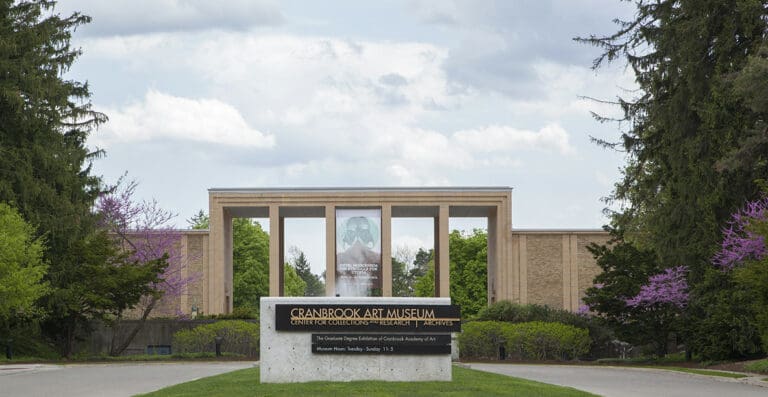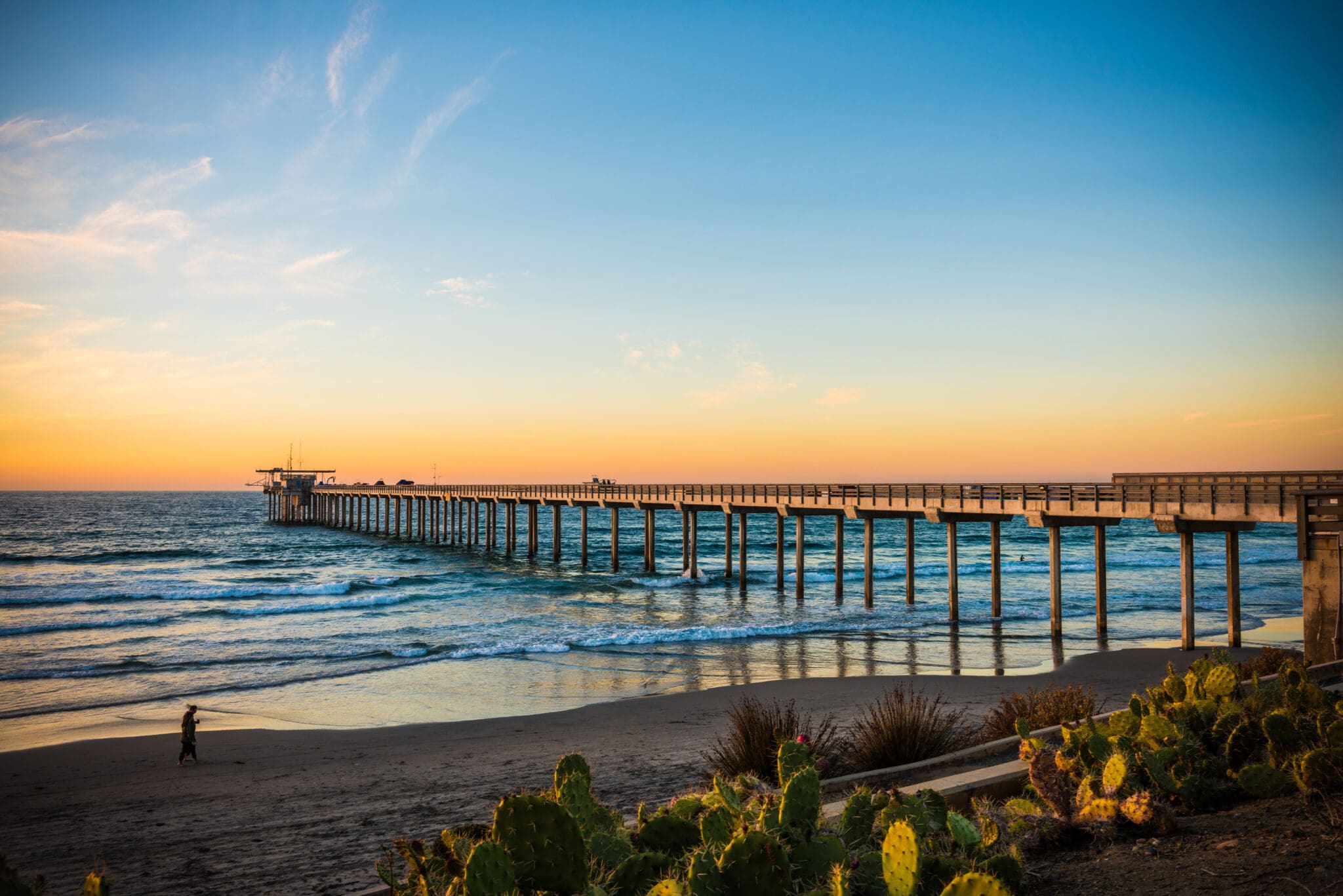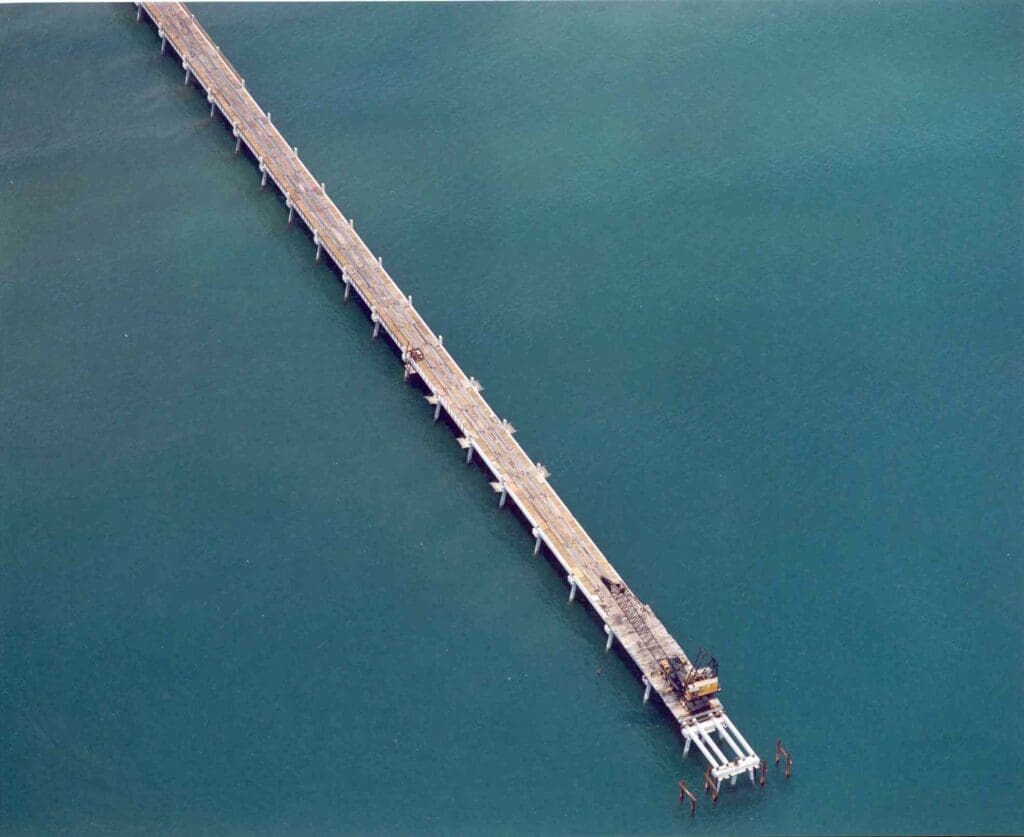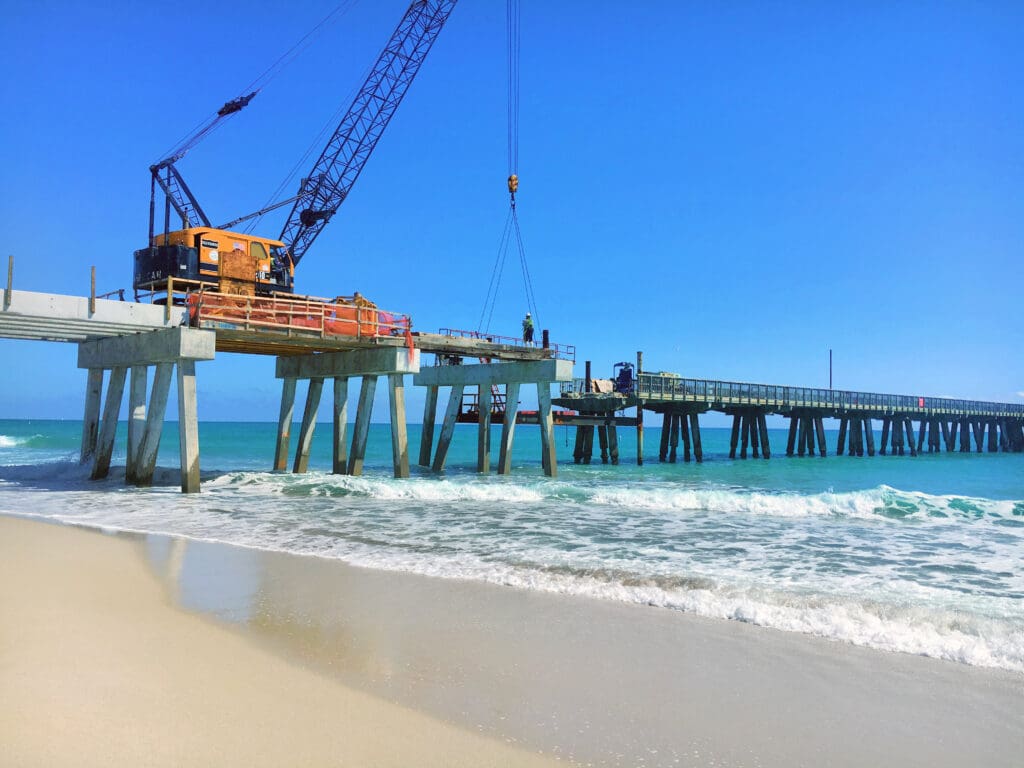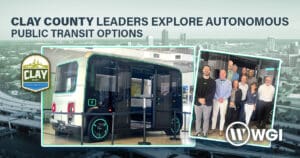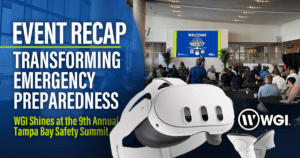Public piers are an indispensable part of life in southern cities along the Gulf of Mexico and Atlantic seacoasts. From the Texas fishing piers of Corpus Christie and the historic pleasure pier of Galveston to Louisiana’s Grand Isle State Park Pier, the dozens of piers that dot Florida’s Gulf coast, around the peninsula, and up the Atlantic coast to North Carolina’s OuterBanks—and the many places in between—piers are a staple of southern coastal living. They offer residents and visitors a scenic, pleasant place to fish, relax, walk out over the water, and socialize.
Public piers provide numerous social and economic advantages to the communities where they are located. The quality-of-life benefits are obvious. Public piers provide a place for recreation and entertainment in a beautiful environment, and they tend to attract significant numbers of visitors. They also provide communities with economic benefits because businesses like restaurants, bars, entertainment complexes, and artisan shops tend to sprout up around them, and those businesses generate tax revenues. Public piers truly present a win/win/win scenario in which residents and visitors, businesses, and the municipality all benefit.
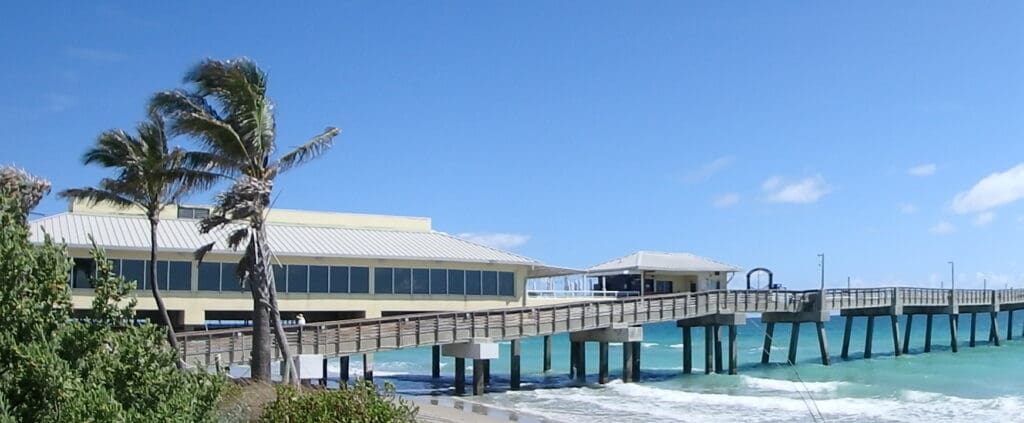
Unique Structures, Unique Challenges
As beneficial as piers are to local communities, their design and construction pose significant challenges that require special forms of expertise. First and foremost is permitting. Simply put, it’s difficult to get a new pier approved because of its environmental impact. Not only must pier projects be signed off on by the cities and towns where they are located, but they also typically must be approved by state and federal agencies. The process can be time-consuming, taking several years. It’s vital that the process is managed by design consultants who have experience overseeing local,
state, and federal permitting processes. Equally important is the consultant’s ability to handle owner expectations, while skillfully directing the owner through the entire process. WGI has been instrumental in providing owners with expertise in negotiating these challenges.
These challenges result in pier construction often occurring on the footprint of an existing pier, minimizing the environmental impact since the area is already used for the same purpose. However, using an existing footprint poses a different obstacle. Historically, piers were developed on busier beaches to make them more accessible. Those beaches are often still in use, making it vital to focus on the safety of beachgoers and local homeowners when planning and implementing a pier construction program. This requires preparing a pier design that minimizes the construction
activities performed in close proximity to the public. The result is installing controlled and separate construction areas to safely keep people away from active construction.
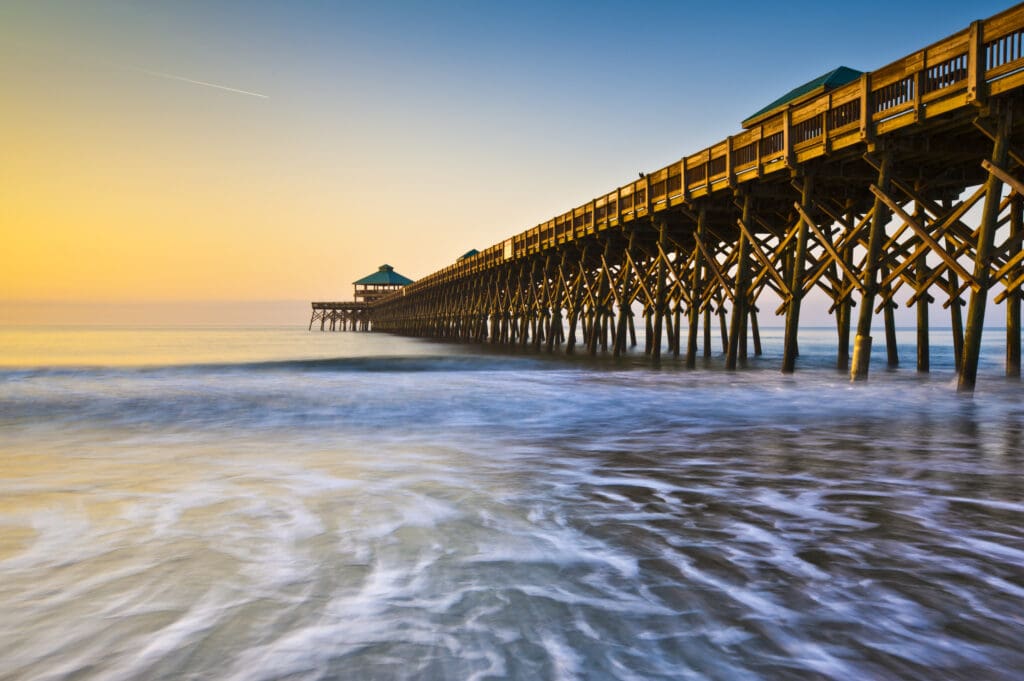
There are positive developments — building on an existing footprint doesn’t limit designers in what they can include in the design of anew pier. Technology and design techniques have vastly improved over the past few decades. Engineers and architects have many more options than those who created the older piers. Today’s piers still offer space for people to fish, bait shops to serve them, and walkways for visitors to use. But today designers also use modern landscape architecture techniques to create pleasant green spaces – some offering parks with playgrounds, benches, and other ways to enjoy them. Another evolution is Discovery Centers providing educational programming for children, or open-air entertainment venues for the whole family. Today, designers are only limited by their imaginations, the owner’s budget, and permitting constraints.
Accessibility is also a hallmark of modern piers. Handicap access wasn’t a high priority for the designers of historic piers. Since the passage of the American Disabilities Act (ADA) in 1990, piers are required to provide handicapped access, like all recreational structures. Of course, not every pier is elaborate and offers every possible amenity. Each community is unique, and a pier’s design
should reflect the unique character and needs of the people it serves.
Operating in a Hostile Environment
Piers must be built to function in a hostile environment. Very adaptive engineering is required to ensure that the pier can withstand the constant impact of waves. In this age of climate change, when severe storms become increasingly more common, this is perhaps the most important engineering issue. Piers can be subject to 50,000 to 100,000 pounds of repeated wave impact during
major storms. It’s not only hurricanes that create this force; Nor’easters often pose an equally great risk to piers on the East Coast as hurricanes, and are more common. Combined, the two types of storms pose a threat to virtually any oceanside community in the United States.
Piers must be engineered with the worst-case scenario in mind, and the challenge for designers is balancing the expected worst-case scenario against the pier owner’s budget. There are numerous strategies that engineers at WGI implement to provide this balance. For instance, we create a design where pilings are intended to move gently with the waves created by a major storm – similar to the way high-rises are designed to sway during an earthquake. The pier’s decks are designed to break away, helping to dissipate energy transfer to the structure. These components are detailed for easy replacement poststorm, or partially removed prior to anticipated events. Concrete beams connected above the pilings are not firmly attached, allowing the pilings to react to the wave action while the deck is able to remain more isolated.
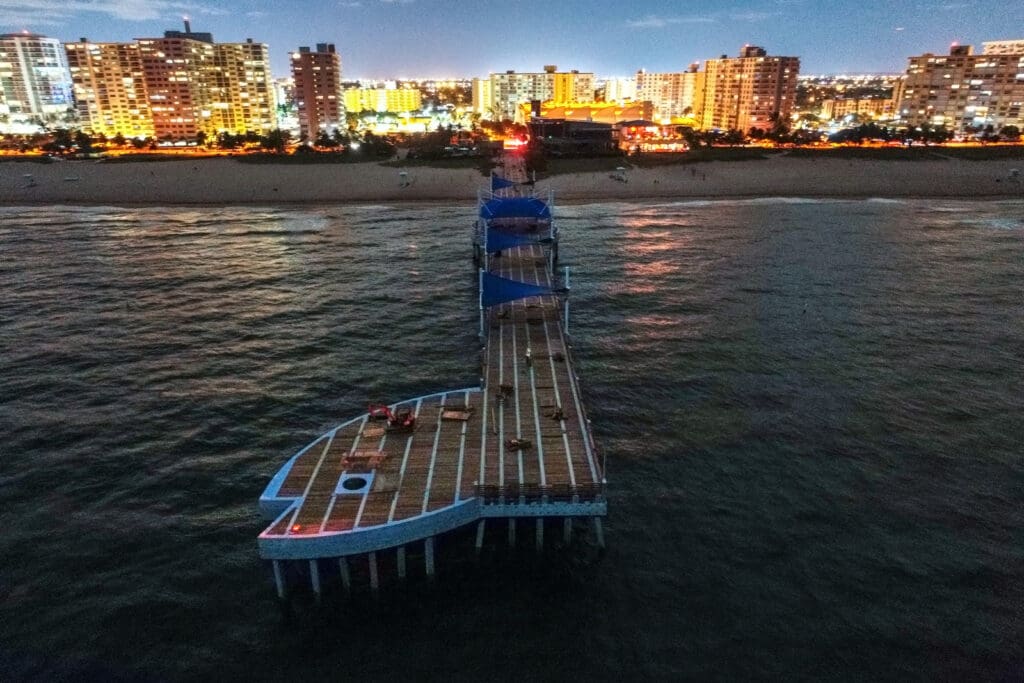
For some piers, it may make sense to design the deck to break away, reducing the wave impact produced by a major storm. This is a unique attribute of pier design. There’s an understanding that during extremely powerful storms, it may be preferable for certain easily replaceable or reparable elements to “fail by design,” protecting the rest of the structure. A rigidly constructed pier could experience significant destruction because a firmly attached deck might increase wave forces the pilings need to resist, whereas designing the deck to break away significantly reduces that energy, protecting the pilings and other essential design elements. This approach can save pier owners millions of dollars in repair or replacement costs while minimizing the time their pier is inoperable due to repairs.
More Than Meets the Eye
It may be tempting to think of pier development solely as a civil engineering venture, but electrical and plumbing are also essential elements. At a basic level, piers need access to water for bait-cutting stations and other functions commonly found on piers, as well as lighting for public safety. Local regulations may also require fire lines to provide access to water if there’s a fire. Multiple different solutions are used to maintain fire safety on piers, including dry fire lines that don’t have continuously running water, but are easily hooked up to a water source in an emergency.
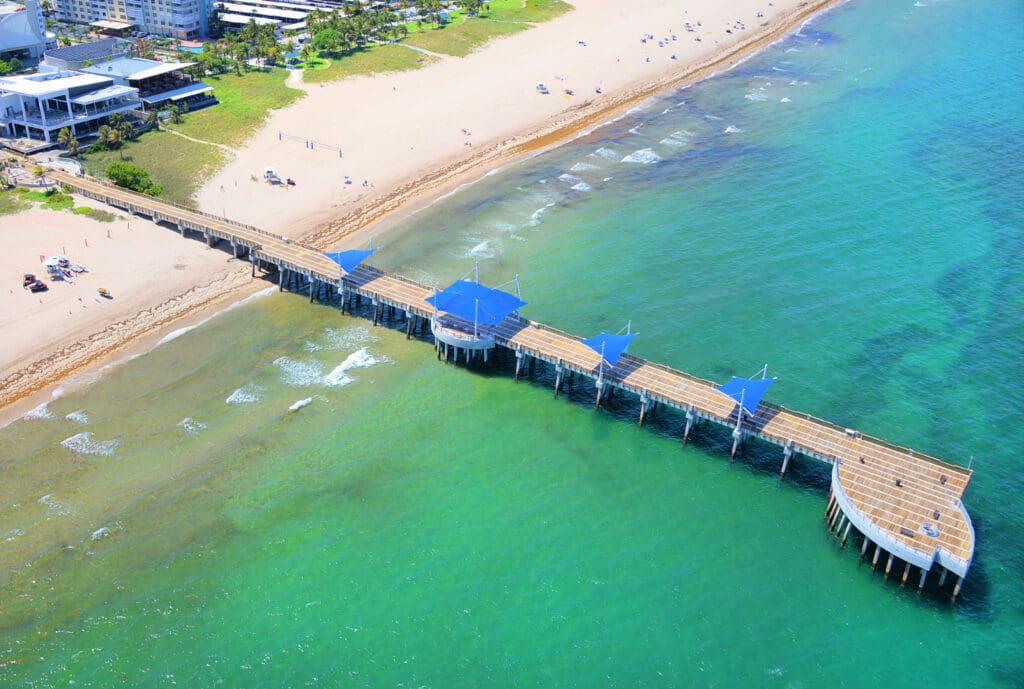
It can be challenging to design water lines and fire lines for a structure that’s up to a thousand feet long and constantly moving because of wave action. That’s why providing a pier’s plumbing requires specialty expertise. The pipes and fittings are constantly coated in salt spray, and water and rain are also continual concerns. You must be very careful when working in such an exposed and corrosive environment, and your materials must withstand salt, UV, sand spray, and persistent movement caused by waves. A plumbing expert with expertise in piers will know which fittings, enclosures, and switches are best able to withstand the elements, and which anti-corrosive materials provide the most resilient coatings.
Landscape engineering is also becoming increasingly important. Many modern piers use green spaces and landscaping to provide a more pleasurable experience. As with the other design elements, the plants and trees used must be able to thrive in a hostile environment, inundated by salt spray, water, and high winds. This requires a distinctive type of landscaping expertise.
WGI: The Leader in Pier Design
WGI has a matchless combination of experience and expertise in pier design and development. Our civil engineering, landscape engineering, and MEP experts work closely together to design piers that will withstand the elements and last for generations. We also have the necessary experience to help owners navigate the challenging and time-consuming process of permit approval.





